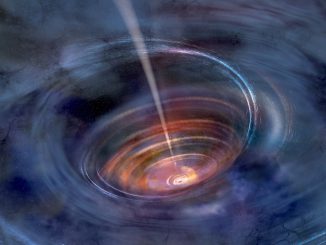The European Southern Observatory’s Very Large Telescope and MUSE instrument show the heart of spiral galaxy NGC 1097, some 45 million light years from Earth in the southern constellation Fornax, where gas and dust sucked in toward a supermassive black hole with 100 million times the mass of the Sun heat up and help fuel a nuclear ring of run-away star birth.

The nuclear ring is just 5,000 light years across, dwarfed by the galaxy’s extended spiral arms, seen below in an image from the Hubble Space Telescope.




